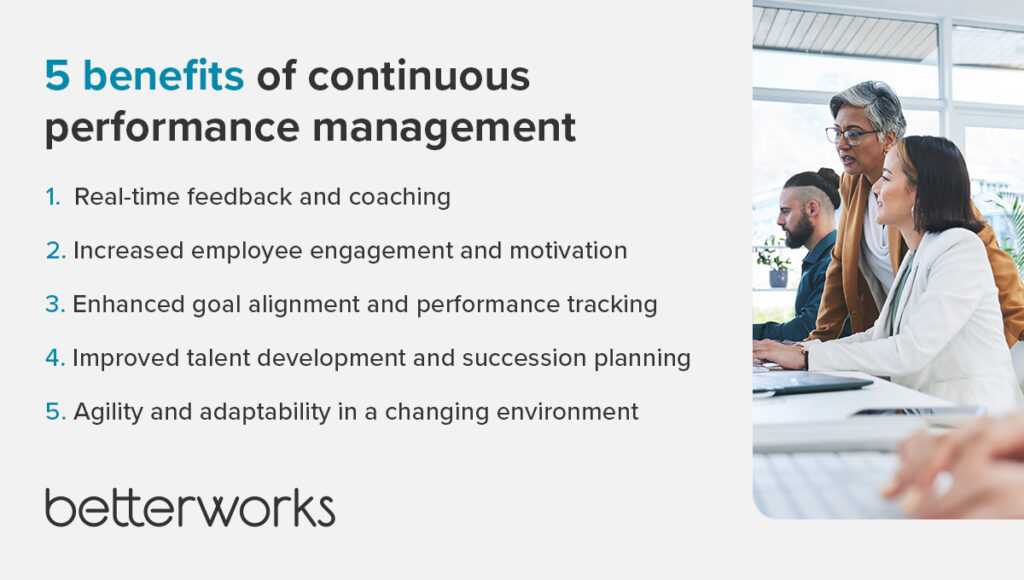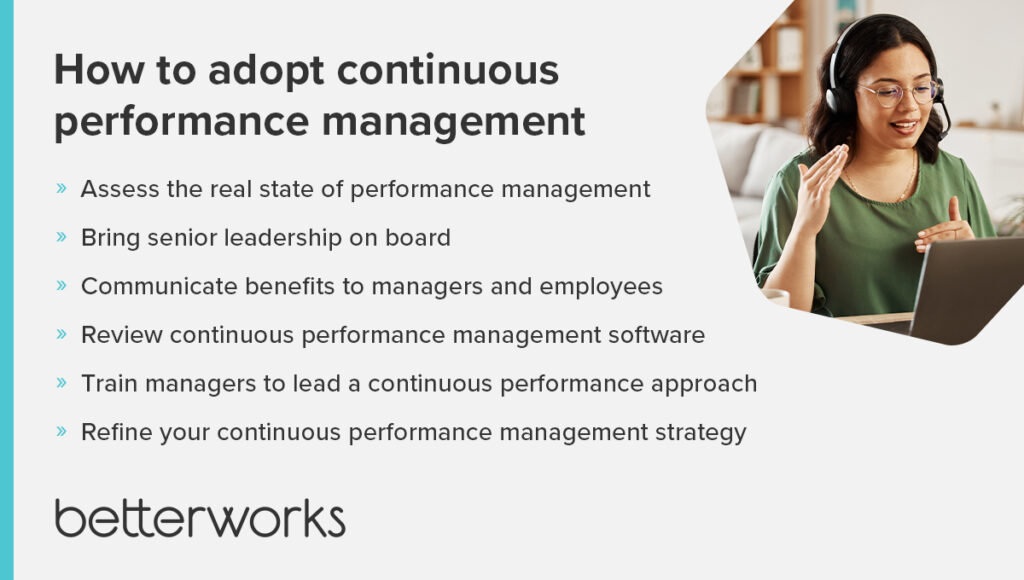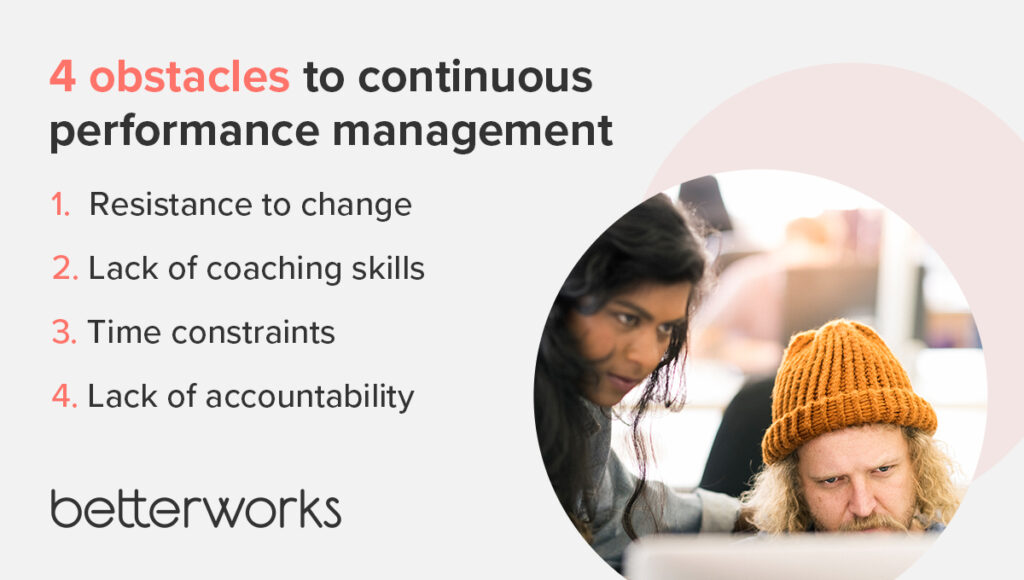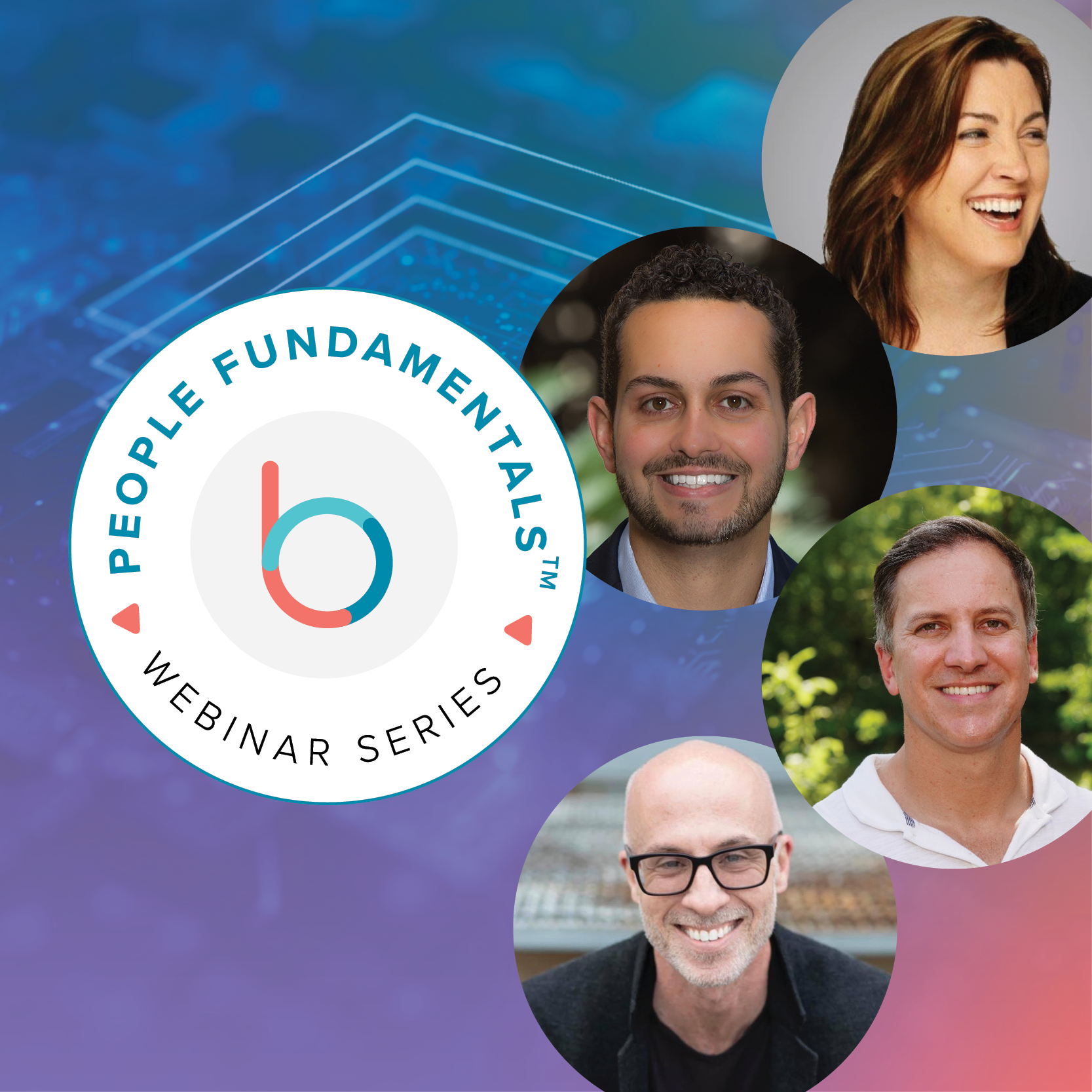The way we work and the need for employees to quickly adapt to rapidly changing business needs and new technologies requires that HR implement processes and programs that help the workforce remain agile and future-focused. We call this continuous performance management. The traditional ways of managing performance are not well-suited to today’s reality of rapid pivots, fast-moving teams, cross-functional work, and rapid problem-solving. Annual or semi-annual reviews and check-ins of work sometimes long past don’t help employees continually improve their productivity, performance, and skills. Continuous performance management shifts away from traditional annual reviews to an ongoing check-in model based on agile goal-setting. It’s a flexible performance management system designed to support employees in the moment and help them focus their energy on continually optimizing their work.
The numbers bear out the difference in the effectiveness of these approaches: Only 32% of respondents to Betterworks’ 2023 State of Performance Enablement report felt that a traditional performance review process enhanced their performance. On the other hand, employees who felt attuned to business goals and empowered to drive them forward considered themselves more productive, confident, and engaged. Among those with purpose-built performance management tools, 92% said they felt adequately enabled to perform at work.
Here are some ways to shift from rigid annual performance review processes to lightweight, agile continuous performance management to create a culture where individuals, teams, and managers can thrive.
5 continuous performance management advantages
Replacing a backward-facing process with one that looks forward helps employees stay aligned and focused on what matters most for the organization. There are five key benefits of continuous performance management that lead to higher performance and better business results.
Real-time feedback and coaching
Continuous performance management encourages managers to provide ongoing feedback and coaching conversations, when those conversations are most beneficial. This timely feedback helps employees understand better their strengths and areas for improvement, and it gives managers the opportunity to provide guidance and help remove roadblocks that inhibit performance. By providing regular feedback and support, employees can adjust their priorities and improve their performance more proactively.
Increased employee engagement and motivation
Traditional annual or semi-annual performance reviews are backward-looking. They focus on past efforts, but fail to continually help employees throughout the year. Continuous performance management, on the other hand, is future-oriented. It focuses on enabling employees to improve and develop in their roles on an ongoing basis. This approach fosters a culture of ongoing communication, strengthens manager-employee relationships, and encourages recognition of behaviors that reflect company values and can be given in a timely manner.
Regular career check-ins between managers and employees demonstrate that the organization values employee growth and development. Development opportunities can be worked in as goals within a performance plan. This, in turn, boosts employee engagement, motivation, and job satisfaction, leading to higher productivity and retention rates.
Enhanced goal alignment and performance tracking
Continuous performance management enables employees to align individual performance goals with the organization’s strategic objectives and understand how their work contributes to the company’s overall success. Employees and their managers are able to track progress regularly through the accomplishment of key results related to each goal. The laddering up of goals from employees to their teams to the broader company ensures everyone rows in the same direction, in turn improving collaboration and achieving better results.
Improved talent development and succession planning
With continuous performance management, HR leaders can identify high-potential employees that traditional approaches might otherwise overlook and nurture their growth through targeted employee development plans. By regularly assessing performance and potential, you can identify skill gaps and provide the necessary training and resources to close them. This approach enhances individual growth and supports succession planning by identifying future leaders within the organization.
Agility and adaptability in a changing environment
Organizations today must be able to respond and adapt to constant changes. Continuous performance management processes facilitate regular conversations about changing priorities, evolving job roles, and emerging challenges, and they enable goals to be modified to reflect new needs. This flexibility allows HR leaders to address issues promptly, making the necessary adjustments to equip employees to meet the changing demands of their roles.

6 steps to implementing continuous performance management
Most organizations struggle with getting managers and employees to meaningfully engage in performance review processes even once a year. It might seem overwhelming to implement an ongoing process like continuous performance management.
However, the frequency of conversations, supported by the right tools, presents an easier and lightweight means to track and support employee performance. Here are some steps to transitioning to continuous performance management in your organization.
Assess the real state of performance management
It might surprise you to learn that managers and employees have already pieced together their own form of continuous management through 1:1 check-ins, retrospectives after projects, or team post-mortems. Before you can design and communicate a formal continuous performance management program, you need to know where your processes stand now — and how people feel about them.
Conduct surveys or interviews with managers and employees to gather feedback on the current state of performance management. Find out what processes employees find most helpful and where gaps leave people feeling unsupported. This is the essence of designing better people processes, which is critical to the adoption of any new program.
Analyze performance data, such as goal achievement and employee engagement metrics, to evaluate the impact of these processes on individual and team performance.
Bring senior leadership on board
It’s imperative to get buy-in and enthusiasm from senior leadership when implementing continuous performance management. If you can effectively communicate your plan’s purpose and the benefits it will drive for the business, you can bring leaders on board as some of your strongest champions for change.
Additionally, senior leaders must use and follow performance management design just like any other member of the company. Continuous performance management done right involves all employees, regardless of where they sit on an org chart.
Communicate benefits to managers and employees
Strategic communication is a key piece of your transition to continuous performance management. Clearly communicate the purpose and benefits of continuous performance management across the workforce. Explain how it aligns with the organization’s goals and values and can improve employee engagement, development, and overall performance.
Develop messaging specific to different groups. For managers, focus on ways ongoing conversations help develop employees to perform at a higher level. Explain the impact this can have on team goals and outcomes. For employees, explain how continuous feedback gives them a chance to raise roadblocks and concerns before they become a problem and to ask managers for advice on career growth and skill development.
Address any concerns or misconceptions managers and employees might have to make sure you gain their buy-in.
Review continuous performance management software
Leveraging technology to facilitate continuous performance management is vital to formalizing a process that works equally for everyone. Software enabling managers, employees, and leaders to track goals, exchange feedback, and schedule 1:1 meetings will make it easier for people to use your new process. These solutions provide templates for conversations and feedback, and in some cases, such as with Betterworks, offer AI tools that simplify goal writing, conversations, and feedback to make performance management easier and unbiased. Performance management software will also help you uncover useful data that will guide decision-making and prioritization.
Train managers to lead a continuous performance approach
Provide comprehensive training to managers and employees on continuous performance management principles and practices. Training should cover topics such as effective feedback, goal setting, ongoing coaching, and performance tracking. Equip managers with the necessary skills and tools to conduct regular check-ins and provide constructive feedback.
Refine your continuous performance management strategy
An effective performance management strategy requires an iterative process consisting of ongoing evaluation and refinement. Collect feedback from managers and employees to understand what works well and what can be improved. Adjust the process based on feedback and evolving organizational needs. Regularly review and update performance management policies and guidelines to ensure they remain relevant and effective.

4 obstacles to continuous performance management
Large-scale changes that touch every person and every aspect of business performance can be challenging to implement. As you work toward continuous performance management success, prepare to overcome some of these common obstacles along the way.
Resistance to change
Resistance from employees or managers accustomed to traditional performance management practices is a major obstacle to continuous performance management. To overcome this, organizations can focus on communicating the benefits of continuous performance management, such as increased feedback, development opportunities, and alignment with organizational goals. Providing training and support to managers and employees on the new process can also help alleviate concerns and build confidence in the new approach.
Lack of coaching skills
Another obstacle is a lack of managerial skills in providing ongoing feedback and coaching. To address this, organizations can invest in training programs that equip managers with the necessary skills and tools for effective performance management. Providing resources such as coaching guides, templates, and best practices can also help managers feel more confident and competent in their roles.
Time constraints
Time constraints can be a significant obstacle, as continuous performance management requires regular check-ins and feedback. To offset this, organizations can encourage managers and employees to prioritize performance discussions and allocate dedicated time for these conversations. Leveraging technology solutions, such as performance management software or apps, can also streamline the process and make it more efficient.
Lack of accountability
A common obstacle is the lack of accountability in following through with performance management activities. To address this, organizations can establish clear expectations and guidelines for managers and employees regarding their roles and responsibilities in the process. Regularly reviewing and monitoring progress, providing reminders, and recognizing and rewarding those actively engaged in continuous performance management can help foster a company culture that emphasizes workplace accountability.

The future of performance management
The future of performance management lies in embracing continuous performance management practices. As organizations recognize the limitations of traditional annual reviews, they are shifting towards more agile and ongoing approaches to performance management. Continuous performance management allows for real-time feedback, goal tracking, and development planning, fostering a culture of ongoing learning and improvement.
To keep continuous performance management on track, organizations can leverage tools like Betterworks. Betterworks offers an intelligent performance enablement platform that simplifies the process, enhances manager effectiveness, and drives higher employee engagement. With features such as goal-setting, conversations, feedback, employee engagement, AI, and advanced analytics, Betterworks provides a comprehensive solution to support continuous performance management.
Want to learn more? Find out how Betterworks promotes timely employee feedback.
6 Keys to Performance Enablement







